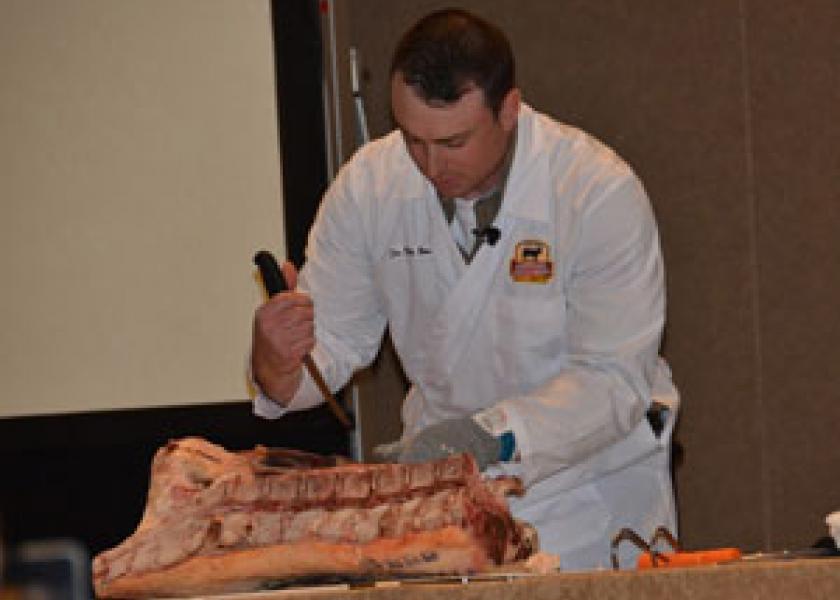Better Beef Focus at NBCA Cattlemen’s College

New cuts of beef are meant to serve consumers of all kinds.
Not all consumers want a 14-oz. porterhouse sirloin steak—but producers won’t be growing smaller cows. That’s the challenge that NCBA new product researchers and meat scientists are looking to meet.
At the National Cattlemen’s Beef Association (NCBA) Cattlemen’s College, Certified Angus Beef (CAB) meat scientists also lent their hands to showing the new cuts of beef, and how it’s serving consumers of all kinds.
"Consumers ask two questions: how do you cook this, and what cut should I buy," says Molly Adams, a Texas rancher and also a brand expert with Om3.
While brand marketers like to promote the traditional family, that’s not reality, "consumers look more like the television Modern Family than ever," she explains. They are intergenerational, non-traditional, single parent, unmarried and multi-ethnic.
Regional styles have also brought new ideas to beef cuts. Adams uses Texas as an example—38% of the state’s 25.1 million people are Hispanic. "Beef is king of ethnic cuisine," Adams says.
While commodity beef are still the majority, niche markets, whether Natural or Organic claims, are more than 4% of beef sales and growing in double digits.
Efforts through the checkoff has looked for ways to improve profitability for middle meats. "As animals get bigger, sirloins, etc., are getting bigger and the industry is starting to push back that some products are too big," says Bridget Wasser, with NCBA.
Examples are converting primal meats to subprimal meats thorough deboning and meat cutting, as well as positioning bone-in cuts in more value-driven ways.
Phil Bass, CAB meat scientist, was also on hand to visually show these new techniques and products to consumers.
Read full coverage of the Cattle Industry Convention and NCBA Trade Show.







